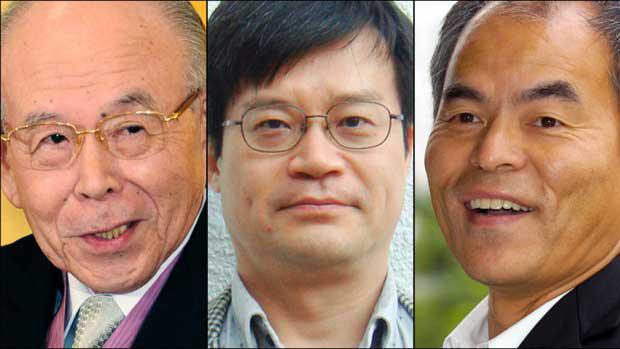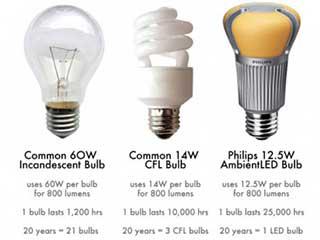News
Contact us
- Address:
N.O. 53 Nanhuan Road, GongMing, Shenzhen, GuangDong Province, China (Post code 518107). - Zipcode:518109
- Email:info@ariseled.com
- Mobile:+86 136 2020 9526
- Web:http://www.ariseled.com
The Nobel Prize in Physics to the Inventors of the Blue LED
—— Article from screens magzine, Nov 25, 2014.
Chief editor - Vladimir Krylov, PhD
Deputy chief editor - Michael Nikulichev, PhD
The path that leads to scientific inventions is mysterious and unpredictable. Some inventions get implemented but are then forgotten and disappear into oblivion. This is what happened with typewriters, pagers, and fax machines. Others remain in public use, but the priority of their invention is constantly debated – as in the case of radio and telegraph.Some inventions are widely implemented and even change the world market but their authors remain anonymous (e.g. mobile phones). The same is true about most useful things and appliances that are used universally, as for example, with the inventors of blue LEDs, the Japanese scientists Isamu Akasaki, Hiroshi Amano and Shuji Nakamura).

Although first blue LEDs were created back in 1971 by Jacques Isaac Pankove, the invention did not move past the experimental stage. The LEDs were too expensive and not sufficiently bright. And only 20 years later the Japanese scientists changed the process of crystal growth and created a commercial blue light-emitting diode.
They managed to develop a relatively cheap technology best known as p-n junction blue LEDs using gallium nitride (GaN) – at first on sapphire substrate by a low-temperature buffer layer technology (first growing aluminum nitride crystal and then gallium nitride crystal on top). Shuji Nakamura who worked independently of his two colleagues developed a different method of growing the first layer of indium gallium nitride crystal at relatively low temperatures of 500 degrees centigrade and then increasing temperature for growing other layers. The result was the first high-brightness blue LED that could be produced commercially.Whatever the case, the blue LED appears in the mid 90ies, about 20 years after the red and green. Now on the basis of RGB combination it is possible to achieve white color and millions of hues. An excellent tool for manufacturers of advertising screens!

Lamp advertising screen in Moscow with 12x9 meter dimensions. Erected in 1999.
It is hard to believe in mammoths and dinosaurs but they did exist. In the era before blue LED, full-color screens had to be made on the basis of electrical incandescent lamps. This resulted in enormous electrical consumption. For example, fairly recently, at the beginning of our super modern 21st century there still existed networks of huge (by early screen standards) lamp screens with the ridiculous 160х120 resolution (pixel pitch of only 76 mm!). And the electrical consumption of those monsters was the unthinkable 600 kW.
Blue LED practically revolutionized the advertising industry. All screens turned LED. Today a lamp screen is a as rare as manual typewriter. Together with the blue LED the already existing red and green LEDs allowed to reproduce all possible combinations of colors, as well as to create a color that is perceived by the human eye as white.
However, while LEDs were indisputable winners in the area of outdoor advertising (today LED screens are operating all around the world) – the scientific community seemed not to pay any attention to it. However as the LED industry matured and grew in size, the LED prices started falling, and new LED applications started to appear almost on a daily basis. It is interesting to compare the relative prices. For example, a full-color pixel in 1998 cost 2.5 dollars, today – about 2 cents.

Comparison of the incandescent, fluorescent and LED bulbs
At this point, the LED lobby attacked consumer market at all fronts. The harmless and useful invention became the reason for bankruptcy and disappearance of large fields of industry. The neon industry was the first victim. Today practically all neon signs were replaced by LED-based structures. Then came the turn of plasma TVs that lost battle to LED-backlight technology. Today LEDs are continuing the onslaught onto the market of incandescent lamps.
And it is only at this point that the scientific community and the Nobel Committee gracefully noticed the invention of the Japanese scientists. Some of them by this time stopped to be Japanese: Shuji Nakamura is currently the US citizen and works at the College of Engineering, University of California, and Santa Barbara (UCSB). Probably this helped him to sue his former employer the Nichia Corporation over his bonus for the discovery and get ¥840 million (~US$9 million), at the time the largest bonus ever paid by a Japanese company. Therefore the Nobel million divided by three is probably not so important for him. But another matter is prestige.
The low-power, long-lasting and ecologically efficient light sources, as stated by the Nobel Committee, have drastically improved lifestyle of more than 1.5 bln people in the world. Apparently, this is a low estimate. The time will soon come when LED technologies will spread even wider. Unless, that is, another future Nobel laureate is working at some remote laboratory growing even more commercially efficient crystals that will replace the today’s LEDs.








